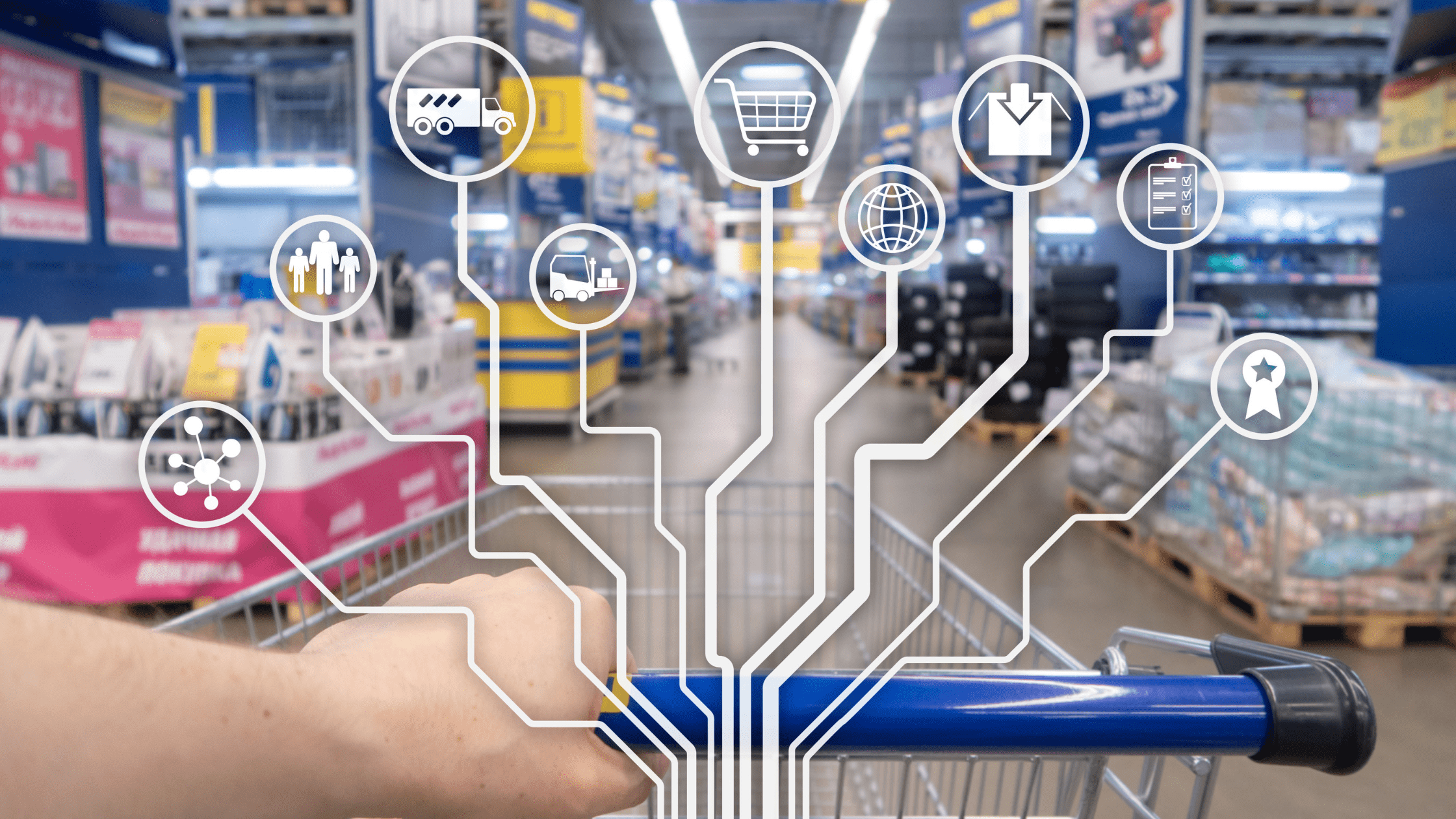In the ever-changing world of online business, change is the only constant. Just keeping up isn’t enough to stay ahead in the digital world. You also need to be able to see what’s coming, be flexible, and pay close attention to new trends. As we get closer to 2024, knowing the emerging trends affecting the e-commerce business is critical. In this article, we’ll look at the main B2B E-commerce trends for 2024, giving you useful information and tactics to keep your company competitive.
Why Keep Up?
Staying updated on E-commerce trends, technology, practices, and marketing strategies is vital for various reasons:
- Enables predicting future industry changes, aiding in planning, strategizing, and resource allocation.
- Embracing new trends positions your brand as an innovative, forward-thinking leader willing to break conventions for superior products.
- Fosters connections that keep you ahead of competitors, shifting from a trend chaser to a trendsetter.
- The ultimate goal is business growth; adopting new technologies, sales channels, and practices facilitates reaching more customers and expanding your business’s reach.
Top B2B E-commerce Trends for 2024
Prepare for 2024; it’s essential to remain proactive by acquainting yourself with the industry’s pivotal trends. This revised article explores transformative trends worth monitoring, ranging from voice-activated shopping to evolving social media tactics.
Without delay, here is our compilation of the top B2B E-commerce trends poised to make an impact in 2024:

Expect More Voice-Enabled Search
The prevalence of smart home devices such as Amazon Alexa and Google Home is fostering the widespread adoption of voice-activated searches. Retailers should proactively adjust by prioritizing optimization for voice search, honing in on conversational keywords, and enhancing local SEO to tap into this expanding market effectively.
Projections indicate that global sales of these voice-enabled devices are poised to surpass $30 billion by 2024. The United States is expected to play a significant role in this trajectory, with estimates suggesting that over half of American households—approximately 55%—will likely have a smart speaker by 2024. Investing in optimization for voice-enabled commerce now positions businesses favorably for this inevitable trend.
Headless Websites Offer Greater Flexibility
Headless Ecommerce architectures are gaining popularity among businesses aiming for adaptable and scalable solutions. This approach facilitates smooth backend updates, empowering real-time customization across diverse front-end channels, thereby enhancing business agility.
According to IDC, numerous Ecommerce platforms, particularly in the B2B sector, need help to meet contemporary customer experience standards. The concept of headless Ecommerce becomes pertinent in addressing this challenge. IDC’s data reveals that companies prioritize specific aspects when choosing digital commerce platforms:
- Scaling operations globally (30%)
- Meeting or surpassing customer expectations (23%)
- Forming integrated offers with various providers and collaborators (22%)
In this setup, the front end (customer interaction interface) and the back end (underlying functionalities) function independently, allowing for heightened customization options and increased design flexibility.
The Multimedia Revolution: Video, AR, & VR
AR and VR technologies are revolutionizing customer engagement, offering unprecedented immersive experiences. Concurrently, video content is gaining momentum, enabling brands to convey narratives more effectively within a rich multimedia framework. As we approach 2025, the boundaries between augmented reality (AR) and virtual reality (VR) are expected to blur significantly. These evolving devices are poised to amalgamate features from both realms, paving the way for multifaceted user experiences.
This transformative potential prompts a comprehensive reevaluation of various facets of our lives. Social interactions, spatial design, and the utilization of private and public spaces are all subject to reconsideration in light of the merging of real-world and digital visuals.
Loyalty Programs Enhance Customer Experience
In response to evolving customer expectations, brands increasingly must engage on the customer’s terms. Outperforming competitors hinge on embracing hyper-personalization. The era of generic, one-size-fits-all approaches is waning, making room for finely tuned strategies tailored to individual needs.
By 2024, hyper-personalization will take center stage in customer experience initiatives. Companies must leverage advanced data analytics, artificial intelligence (AI), and machine learning (ML) to collect and interpret customer data. At the same time, personalized loyalty programs with tailored rewards and experiences become instrumental in driving customer retention and enhancing lifetime value.
B2B E-commerce on the Rise
B2B transactions are rapidly transitioning to online platforms, necessitating a paradigm shift in how businesses engage with corporate clients.
The norm in B2B E-commerce now involves digital catalogs, streamlined ordering systems, and customized pricing—an evolution from traditional B2B models that often lagged behind B2B E-commerce trends. Forrester predicts that B2B online sales will surpass $2.3 trillion in 2024, with projections exceeding $3 trillion by 2027.
This growth coincides with the increasing presence of Gen-Zers and Millennials in the workforce, assuming decision-making roles for purchases. Unlike previous generations, these cohorts prefer researching and buying products online, often bypassing traditional sales interactions.
Social Media Transforming into Sales Platforms
Instagram, Facebook, and TikTok are evolving into sales hubs through features like shoppable posts and in-app purchasing. This seamless shopping experience enables users to buy products without leaving the social media platform.
Statista estimates that the United States will have 331.09 million social media users by 2028. In today’s attention-centric economy, it’s crucial to reconsider the role of social media, not just in marketing but throughout the entire enterprise.
While the famous social media landscape may evolve, integrating social media capabilities across your company can secure your brand’s future.

Advancements in Machine Learning
One of the top B2B E-commerce trends is Machine learning technologies. It empowers retailers to provide highly personalized experiences using predictive analytics, product recommendation algorithms, and customer service chatbots. It makes machine learning a vital component of modern Ecommerce.
Recent data indicates that AI, machine learning, and “computer vision” will significantly impact crucial retail operations, automating tasks like item picking, enhancing customer service through digital live chats, enabling targeted marketing strategies, and optimizing inventory management.
From a marketing perspective, some experts suggest that traditional practices like search engine optimization (SEO) might become obsolete. While not entirely true, it’s essential to acknowledge the evolving landscape and make room for new AI-optimized practices.
Quick Commerce (Q-Commerce) and Livestream Shopping
The landscape of product delivery is transforming with the advent of Quick Commerce, or Q-commerce, propelled by platforms such as Amazon Prime Now and other innovative companies.
At its core, Q-commerce revolves around the rapid and convenient delivery of goods, often achieved within minutes. This trend is driven by the increasing impatience of consumers seeking immediate product access. To meet this growing demand, businesses are adapting their strategies.
For example, the Need for It Tonight shopping app has partnered with the courier service Gophr to offer a 90-minute delivery option for fashion merchandise. As this movement gains momentum, it is anticipated that more companies will forge alliances with local delivery services, investing in last-mile logistics to facilitate fast and efficient deliveries.
Increased Security Measures
The rise in cyber threats necessitates heightened security measures in Ecommerce. We can expect an increased implementation of multi-factor authentication, secure payment gateways, and end-to-end encryption on various websites.
Financial technology firms rely on robust cybersecurity frameworks to safeguard customer data, employing encryption, access management, and secure data storage solutions. Fintech firms, in particular, are leveraging AI to combat AI threats. Machine learning algorithms play a crucial role in their fraud detection and prevention systems, identifying and countering fraudulent activities, thus effectively combating financial fraudsters and mitigating the risks associated with advancements in AI technology.
Connected TV and other Digital Marketing Shifts
Connected TV provides new opportunities for targeted advertisements and branded content. With the growing adoption of smart TVs in households, the potential for direct consumer engagement through this medium is expected to skyrocket.
Notably, Connected TV is swiftly becoming the most popular advertising format in the US. Advertisers stand to benefit from the shift of content, viewership, and engagement towards digital platforms.
While predictions needed adjustments due to unfavorable economic conditions and challenges in digital ad precision and assessment, Connected TV still presents a substantial opportunity for marketers, especially as the influence of traditional TV continues to diminish.
Tailoring Platforms for Distinct Audiences
Recognizing the unique social media preferences across generations is essential. TikTok is poised to dominate the Gen Z market, while a combination of Instagram, TikTok, and Facebook proves more effective in reaching Millennials.
Especially noteworthy is TikTok’s meteoric growth, amassing over a billion users in just five years, achieving this milestone in 2022. With such a substantial user base, TikTok is well-positioned to capitalize on advertising revenue, which is projected to reach around $11 billion in US advertising revenue by 2024, surpassing YouTube.
Competing platforms are now striving to keep up, endeavoring to meet the new standard set by TikTok in the social media landscape. The sustainability of the current balance in audience distribution remains uncertain.
Preference for MTA, UTM, & Incrementality Among B2C Marketers
Multi-touch attribution (MTA) and incrementality are gaining prominence in the focus of B2C marketers. These methods offer a more nuanced understanding of customer journeys, facilitating the optimal allocation of marketing budgets.
In the context of 2024, envision attribution utilizing well-configured UTM codes. These codes serve as a lens through which the complete customer interaction with a brand can be observed, from initial engagement to the final interaction before purchasing.
UTMs provide insights into the sources of web traffic-specific links clicked during a campaign and aid in monitoring campaign performance across different platforms such as Facebook, Google, or other social media channels. MTA and UTM insights are crucial for refining the customer journey, especially in a post-cookie environment, and maximizing the return on marketing investments.
Elevated Importance of Key Metrics
Investing investments demands a meticulous examination of key performance indicators (KPIs). These metrics help identify initiatives and campaigns that most efficiently achieve goals, preventing resource waste and guiding budget allocation toward high-return campaigns.
Effective financial management is pivotal in digital marketing strategy, with KPIs such as customer acquisition cost (CAC), customer lifetime value (CLV), and return on ad spend (ROAS) being vital benchmarks.
In 2024, with abundant marketing avenues, diligent tracking of KPIs is essential to assess strategy effectiveness and make necessary adjustments.
Rise of Environmentally Conscious Commerce
Anticipate a surge in eco-friendly eCommerce initiatives as environmental concerns dominate public discourse. A commitment to “green” practices will be a defining theme from sustainable packaging to carbon-neutral delivery options.
Consumer preferences consistently favor brands emphasizing green initiatives and ethical business operations year over year. To align with sustainability and B2B E-commerce trends, consider adopting eco-friendly packaging, minimizing shipping-related carbon footprints, and partnering with suppliers committed to ethical practices. Leverage marketing platforms to highlight green credentials and responsible business practices, setting your brand apart.
Final Verdict
As eCommerce and digital marketing undergo rapid transformations, understanding and leveraging these B2B E-commerce Trends can provide businesses with a competitive edge, preparing them to tackle the challenges of 2024 and beyond.
With Canadian Software Agency’s expert Shopify development services, you can take control of your online success. Stay ahead of the curve in the digital world by discovering cutting-edge solutions. For a new experience with eCommerce, get in touch with us today!




